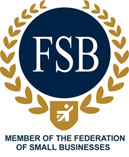North London
N1: Islington
The original name for Islington was ‘Giseldone’, named by the Saxons. An area of Greater London, Islington is an upmarket residential area extending from Islington High Street to Highbury Fields.
N1: Barnsbury
Barnsbury was originally called ‘villa de Iseldon Berners’, after the Berners family, who were medieval lords who took ownership over a large part of Islington after the Norman conquest. At the end of the 18th Century, people were starting to regard Barnsbury as a rural suburb, attracting wealthy people who wanted to live away from the cramped City of London.
N1: Canonbury
Canonbury got it’s name in 1253 when the land was granted to the Canons of St Bartholomews Priory, Smithfield. The area of suffered decline during the construction of the railways in the 1860’s. The 1950’s bought new developments to a war-damaged Canonbury Park North and South.
N2: East Finchley
Before East Finchley was developed in the 1890‘s, the land on which it now stands was once part of the Bishop of London’s hunting ground. An area in the Borough of Barnet, East Finchley is situated 5.4 miles north-west of Charring Cross station.
N3: Finchley Central
Also known as Church End, Finchley Central is an area north and west of the North Circular Road. The area is situated around Ballards Lane and Finchley Central tube station.
N4: Finsbury Park
Centered around Finsbury Park tube station, which is based at the southern end of the 110 acre public park which shares the same name. The area has a definite cosmopolitan feel with a range of shops and establishments in the surrounding areas, namely Seven Sisters road.
N4: Manor House
Falling mainly within the Borough of Hackney and located on the border of Haringey, Manor House was built up in the 19th century as part of an area known as Brownswood Park. Now a district without a town center, Manor House is far enough away from other town centers that it is an area in it’s own right.
N5: Highbury
A re-build of the previously decayed manor house gave Highbury it’s name because the manor was on a hill. The site for Highbury Manor was possibly once used by a Roman garrison as a summer camp.
N6: Highgate
Situated to the North-Eastern corner of Hampstead Heath, Highgate is one of the most expensive London suburbs to live in. At the center is Highgate village which comprises of a collection of residential streets, largely Georgian shops, pubs and restaurants.
N7: Holloway
How the inner-city district of Holloway first got it’s name has been disputed. Some believe it derives from hollow way, due to a dip in the road caused by water erosion and the moving of animals. Now with one of the highest densities of resident per square foot, Holloway is one of the most densely populated areas in London.
N8: Crouch End
Known as ‘London’s creative village’, Crouch End has a reputation for being a creative community. Another nickname for the area coined by it’s residents is ‘Nappy Valley’, due to the number if middle class families with children who live there.
N8: Hornsey
Built up mostly during Edwardian times, Hornsey is located within the Borough of Haringey. Located 6.2 miles from Charring Cross, the boundaries of Hornsey are not clearly defined and are still under dispute.
N9: Lower Edmonton
Lower Edmonton is the site for London’s sole complete World War 2 Defence Centre. In the 1960’s, Lower Edmonton was transformed from an area whose residents were mainly white working class to a multicultural suburb.
N10: Muswell Hill
A mainly Edwardian area, the name of Muswell Hill came from a natural spring, or a mossy well, on the site, which was said to have miraculous powers. The earliest records of Muswell Hill date back to the 12th Century.
N11: Friern Barnet
In the Borough of Barnet, Friern Barnet was originally referred to as Little Barnet in the 13th Century. Whilst the area comprises of mainly Victorian and Georgian properties, Friern Barnet is the site of Princess Park Manor, an extravagant redevelopment of the Colney Hatch Lunatic Asylum.
N11: New Southgate
Situated across the boundaries of three Boroughs in London: Haringey, Barnet and Enfield, New Southgate is home to the famous Millennium green, which is situated on Station Road.
N12: North Finchley
Created in 1894, North Finchley has mainly 19th century housing. Centered around Tally Ho Corner, North Finchley became part of the London Borough of Barnet in 1932.
N12: Woodside Park
The most notable area of Woodside Park is the park itself, which houses the sports and social club, and more specifically the areas bowls club. Alongside the park is the Old Finchleians Memorial Ground.
N13: Palmers Green
Palmers Green is also known as ‘Little Cyprus’ or ‘Palmers Greek’ due to the area being the home of largest population of Turkish and Greek Cypriots outside of Cyprus.
N14: Southgate
Southgate got it’s name for being the south gate to Enfield Chase, a forest in the area, originally the King’s hunting grounds. The largest oak tree in England, known as Minchenden Oak, is situated in Christ Church, a building of stone which has a tower and spire that was build in 1862.
N15: Seven Sisters
The name Seven Sisters came from seven elms which were planted with a walnut tree at their center. This unusual area of trees was named the Seven Sisters in 1732. Now stands a ring of hornbeam trees, which were planted ceremoniously by families of seven sisters.
N16: Stamford Hill
Located within the border of Borough of Hackney, near the border of Haringey, Stamford Hill is home to Europe’s largest Adeni and Hasidic Jewish community. Development of the area commenced in around 1800, and over the next 100 years many flourishing dwellings were built in Stamford Hill.
N16: Stoke Newington
In the Middle Ages, Stoke Newington was a very small village located a few miles from the City of London. The area was often visited by wayfarers as a pit stop before continuing North. One of the most notable people associated with Stoke Newington is William Allen, the pioneer of girls’ education. He lived in the area for most of his life.
N17: Tottenham
Tottenham got it’s name from being named after farmer called Tota, who owned a hamlet at the time, thus the area became known as Tottenham. A large area encompassing N15 and N17 postcodes, Tottenham’s inhabitants include one of the largest populations of African-Caribbean people.
N18: Upper Edmonton
Upper Edmonton houses the offices of the area’s major political constitution’s. The area is known for being one of the most multicultural parts of London, including Portuguese, Somalian, Chinese and Albanian communities.
N19: Archway
Archway’s name derives from the bridge built between Hornsey and Highgate in 1896, which has now been replaced by Hornsey Lane Bridge. The route of the first cable car built in Europe was on Highgate Hill, which is in Archway.
N19: Tufnell Park
On the border of Islington and Camden, Tufnell Park got it’s name from Henry Tufnell, who was the sponsor of the area’s first major development scheme in 1845.
For a long time the area was known for it’s dairy farm which supplied milk to London and the South of England.
N20: Totteridge
Located in the Borough of Brent, Totteridge was originally called Tatarige, possibly named after someone called Tata. The area is a mixture of open land (including farmland) and suburban development.
N20: Whetstone
Often known collectively with Totteridge as Totteridge and Whetstone, it is the 63rd richest area in the UK. Located in the Borough of Brent, Whetstone got it’s name from a whetstone, a tool used to sharpen knives and other implements, which is now located on the High Road.
N21: Winchmore Hill
The earliest mention of Winchmore Hill was in 1319, in which it was spelt Wynsemerhull, with merhull meaning boundary hill. Now, at the heart of the area is a village green, which is enveloped in shops and restaurants.
N22: Alexandra Palace
The most famous part of the area is the palace itself. Nicknamed The People’s Palace, Alexandra Palace was built in 1873 as the double of the Crystal Palace which was built in the South of London. Following a fire in 1873, the Palace was re-built in 1875, and that is the Palace that stands there to this day.
N22: Wood Green
Identified as one of the metropolitan centres in Greater London, Wood Green was created as an urban district in 1894. A project called The Chocolate Factory was set up in 1996 to provide studio space for artists, photographers, filmmakers, and performing arts organizations.



